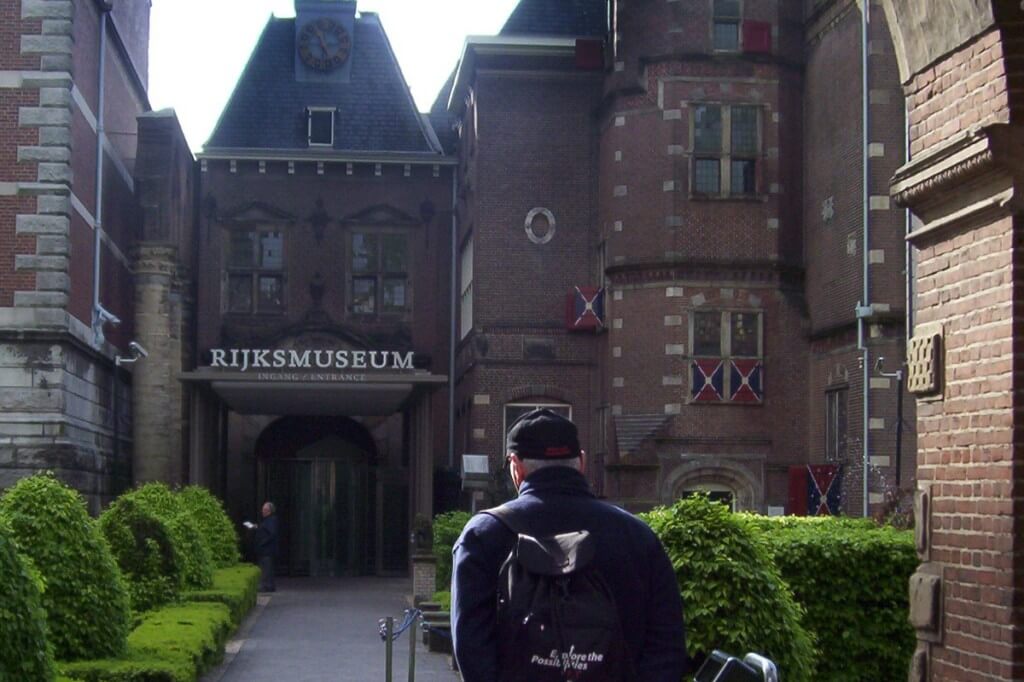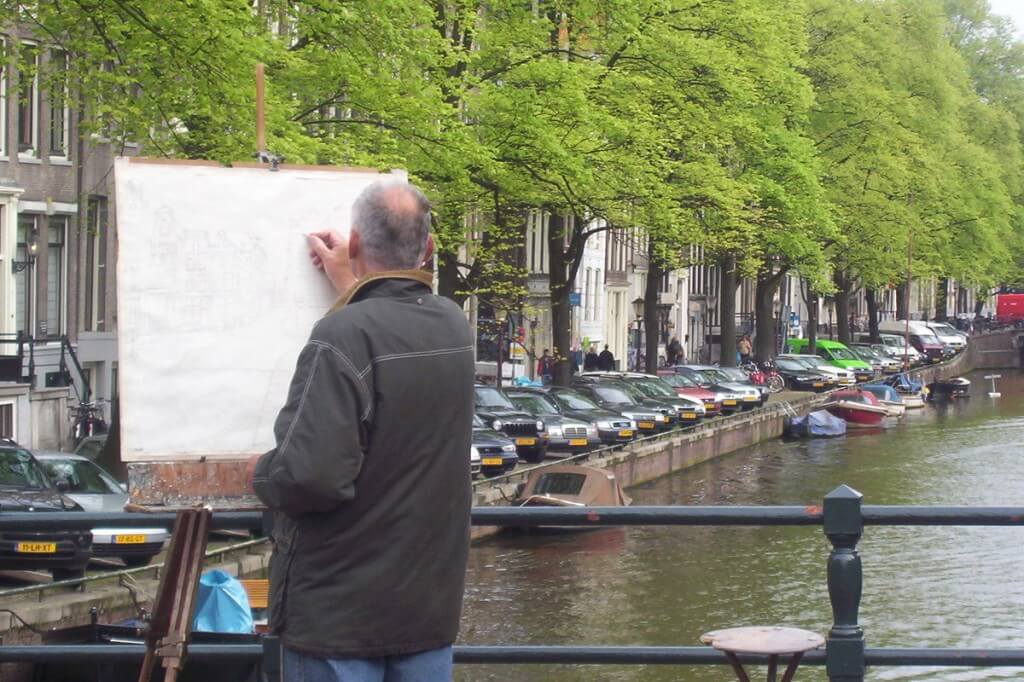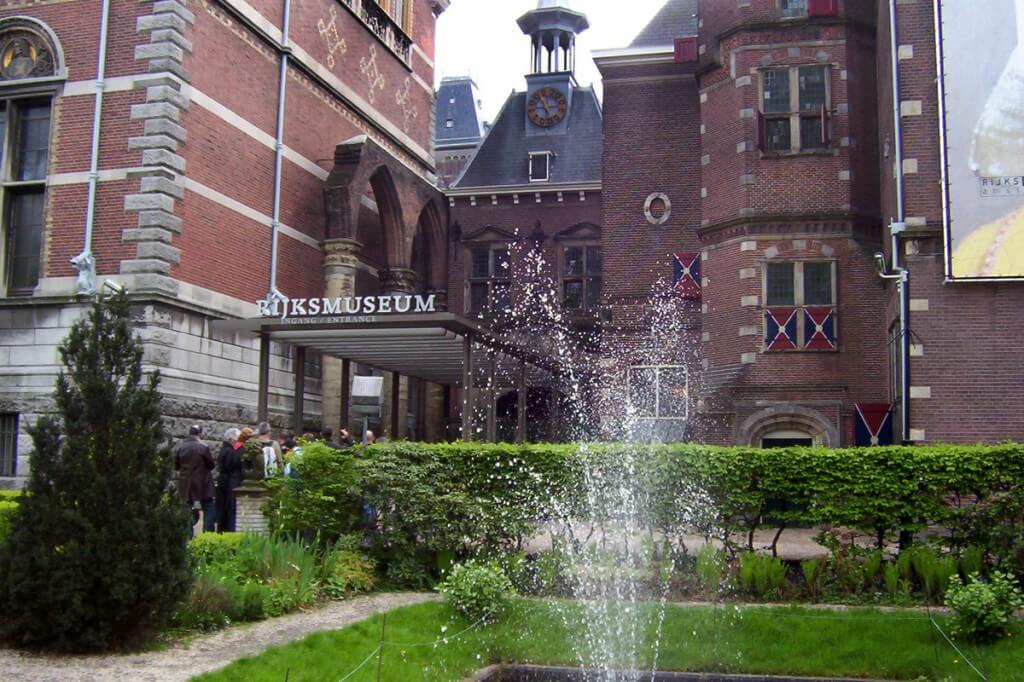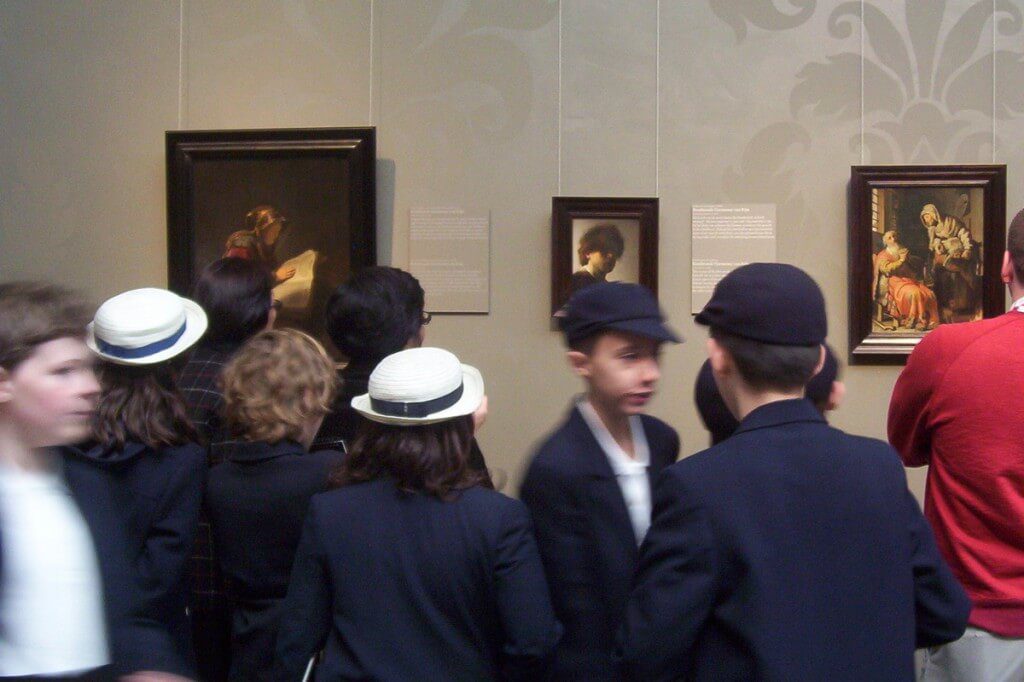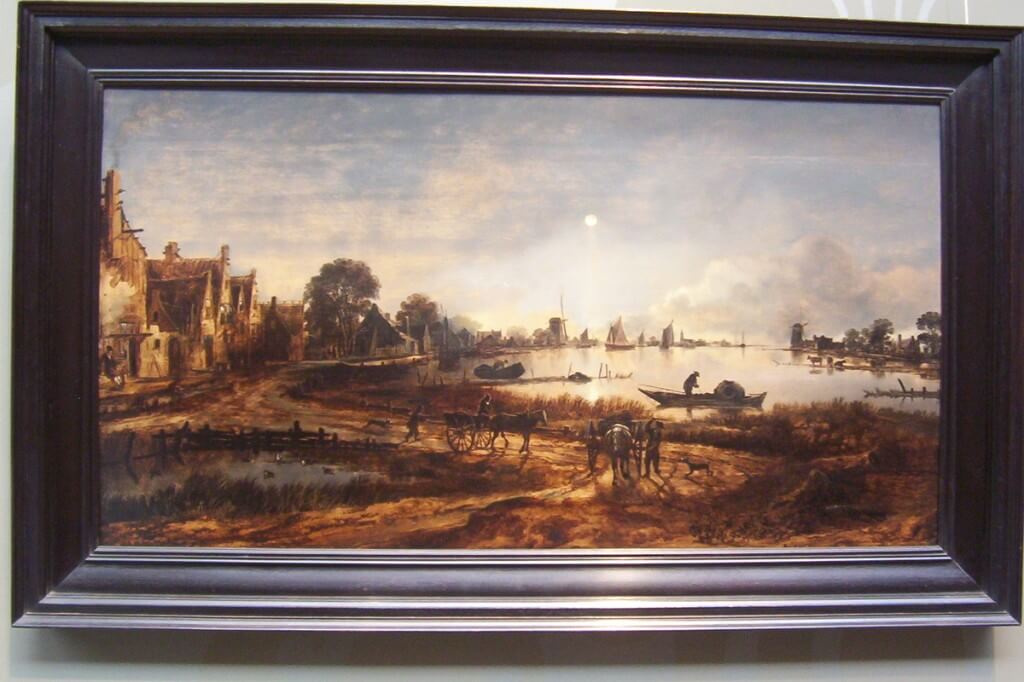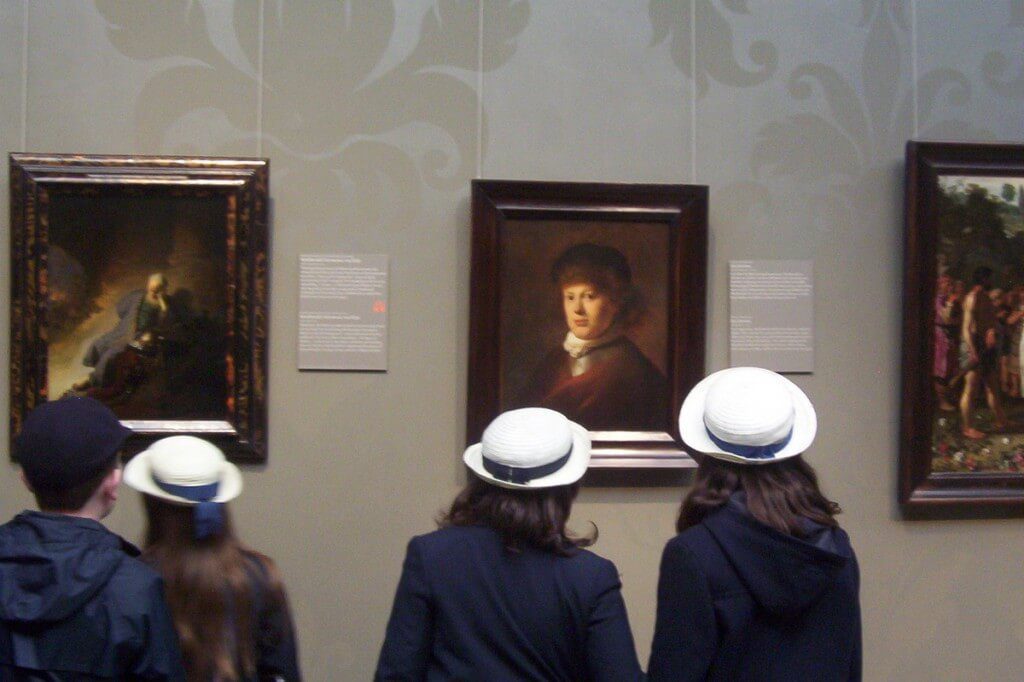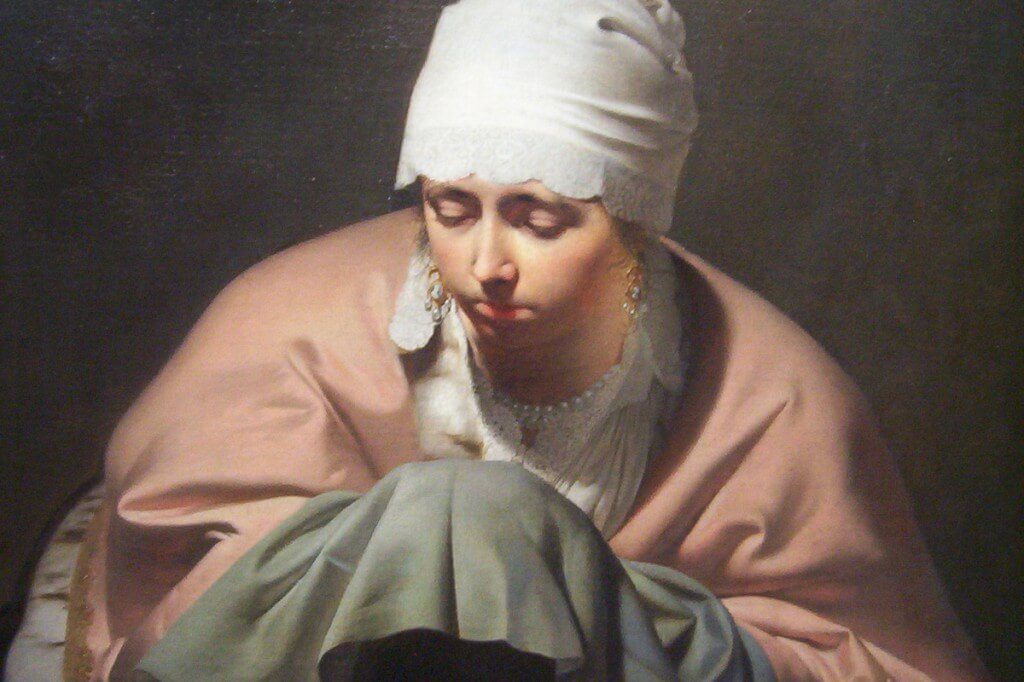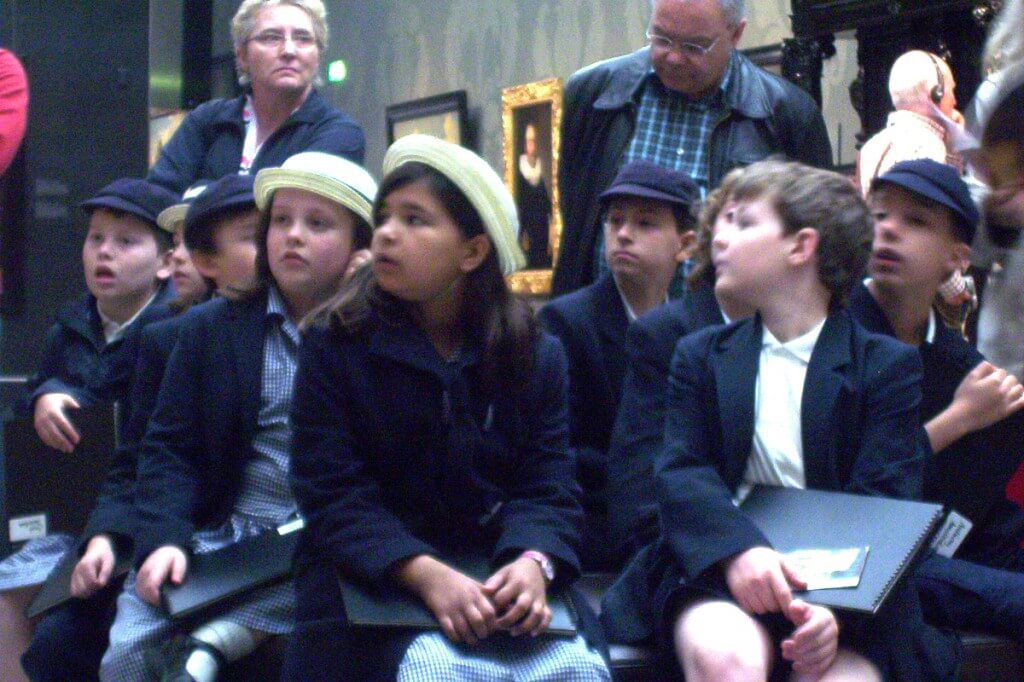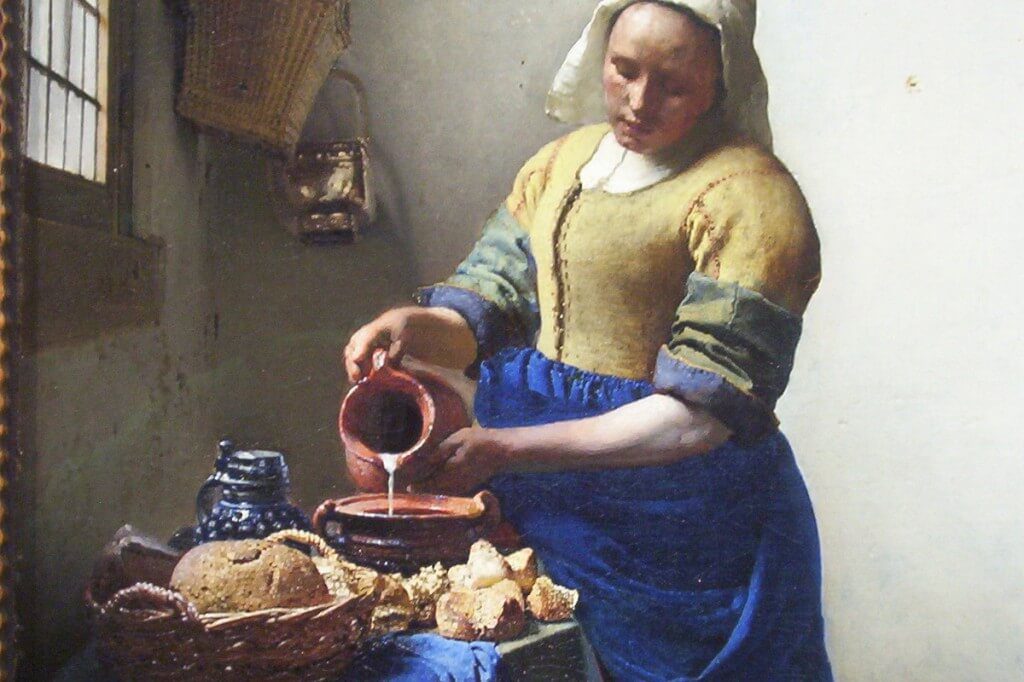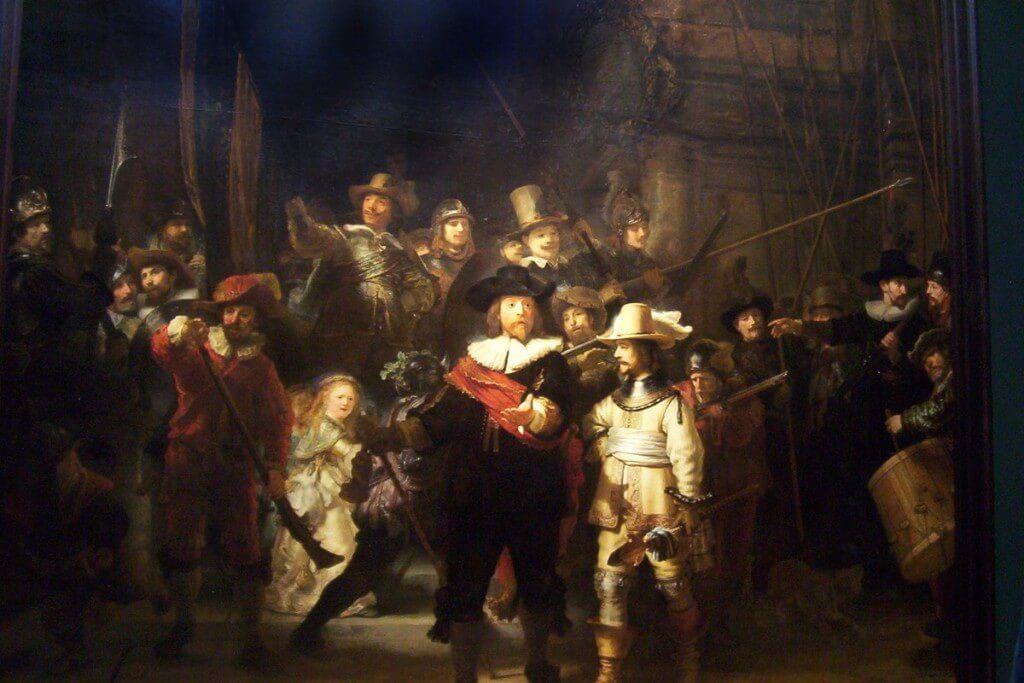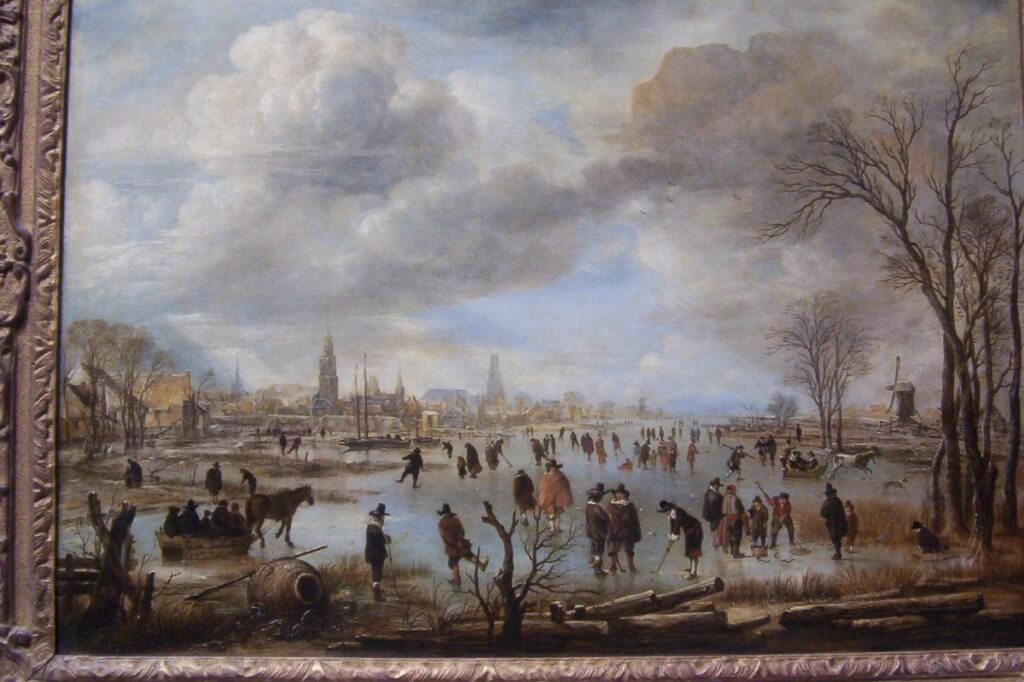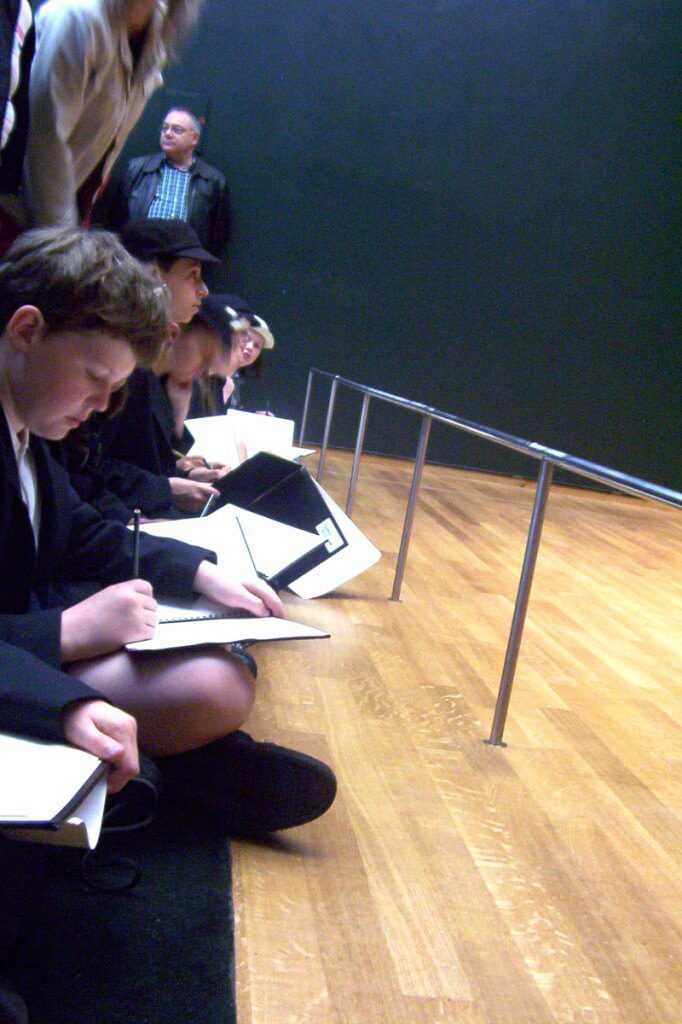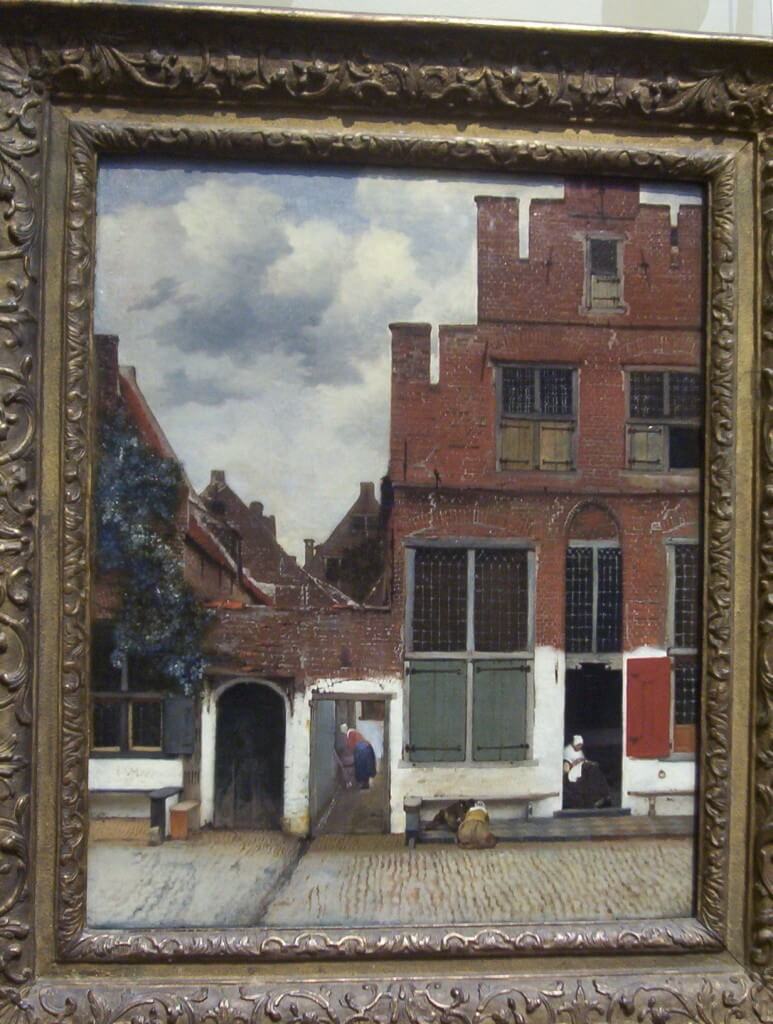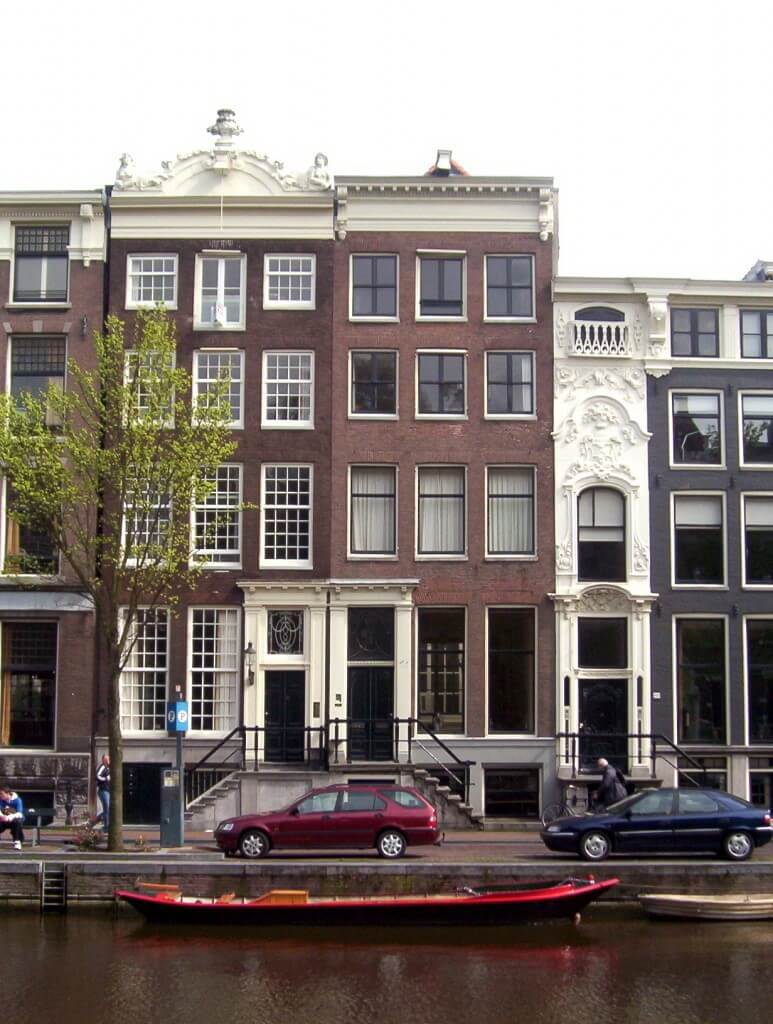Rijksmuseum, The Netherlands Most Famous Museum

On a cool, damp morning, Bob and I hit the streets of Amsterdam early. Long lineups were already in place at Anne Frank Haus, so we proceeded to the Rijksmuseum, a gallery where Rembrandt’s works are on display in the Netherlands.
En route to Amsterdam’s Rijksmuseum to view some of the world’s most famous Dutch masterpieces, we came upon this humble artist busily working away with just a pencil in hand. Like most artists throughout time, this man was sketching a pencil drawing of a scene that he would plan to paint on canvas some day. It seemed like an apt happenstance given that we would soon be viewing wonderful pieces of art that most likely had similar simple beginnings.
The Rijksmuseum is Netherland’s National Museum, and it is home to a wonderful collection of important Dutch art and history. Bob and I knew that the paintings we were about to see had only ever been seen by us before in print, in Canada. Anticipation was mounting!
The day we visited the Rijksmuseum’s art gallery, we found a busy world of young students…a school group of young boys and girls visiting from England.
A couple of the young girls were studying a “Portrait of Rembrandt” done by Jan Lievens in 1629. Back at that time, Rembrandt and Lievens shared a studio in Leiden where they had both been born. Rembrandt went on to being called the most famous painter of the Dutch golden age, while Lievens remained in the shadows. Interestingly, the young students before our lens were all wearing the required uniform clothing of their school, while in the painting, the young Rembrandt lives up to the expected look of his day, wearing a metal collar and a black beret. Styles may change, but social etiquette has not.
Another painting that the young students were drawn to was “Young Woman Warming her Hands over a Brazier” by Cesar Boetius van Everdingen. This painting, done in 1650, features a young woman trying to warm herself over a brazier of hot coals in the middle of winter.
These little girls remind me of Madeleine in the storybook series. Each one wears a white “straw” hat and each little boy a “cap”. They were visiting for four days, and one young lady volunteered that she preferred Amsterdam to London because it was not so hectic. The artists, with sketch pads in hand, were trying to decide which painting to draw.
Among the works that we were able to enjoy was this one of “The Milkmaid” by Johannes Vermeer. This painting is a big draw at the museum because it is considered one of the finest works on exhibit there. “The Milkmaid”, sometimes called “The Kitchen Maid”, is estimated by the Rijksmuseum to have been painted in 1658. As Bob and I contemplated the painting, we wondered what that young maid had been thinking as she poured the milk into her bowl.
With time ticking, the young artists unfolded their sketch pads and got down to work. In a time when most kids spend hours on computer tablets and ipads, it was refreshing to see a group of children putting their impressions on paper with a basic pencil. Their artistic talent was really being put to the test.
One of my favorite paintings viewed that day was “The Night Watch” by Rembrandt van Rijn. This painting was completed in 1642, and it is considered one of his most famous works. The painting also has a myth tied to it – the belief that the negative reaction to the painting by the public back in 1640 led to Rembrandt’s decline in popularity. Today, many modern day art critics believe that Rembrandt went out of style in his time because the buying public decided to move away from dark somber paintings, and came to appreciate brightly colored paintings like those done by artists such as Anthony van Dyck.
This possible future artist still had a preference for Rembrandt’s work as he sketched “The Night Watch”, so Rembrandt’s popularity lives on.
Being Canadians who love to skate, and who actually bought a pair of old wooden skates on this trip, we were both thrilled to see Hendrick Avercamp’s “Enjoying the Ice”. In this Dutch painting, we see so many activities that are still a part of our Canadian way of life. In the foreground, men are playing kolf (hockey), while behind them, on the right, people are fishing with long poles through a hole in the ice. My father and I have ice fished together for decades, so this depiction really touched a chord with me. Although this painting was done in 1630, many of the activities ring true today in Canada, even despite climate change.
These young boys are concentrating mightily on their drawings.
This painting quickly caught our eye. Again painted by Johannes Vermeer, it is called “View of houses in Delft”. It so happened that our daughter was living and working in Delft at the time we visited The Netherlands, so any little preview of what we would be seeing in that town was appreciated. As we would see firsthand in Delft, the scene depicted by Vermeer in this painting still lives on in the many streets and laneways of the present Old Quarter.
With the day drawing to an end, we emerged into the hubbub of busy Amsterdam streets, where still, today, you can identify architecture like that depicted in many of the paintings of the great masters. In many ways, our walk along the street was like moving back in time, or going ahead to the past.

